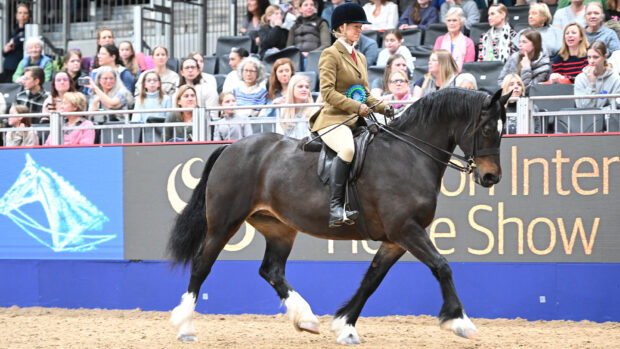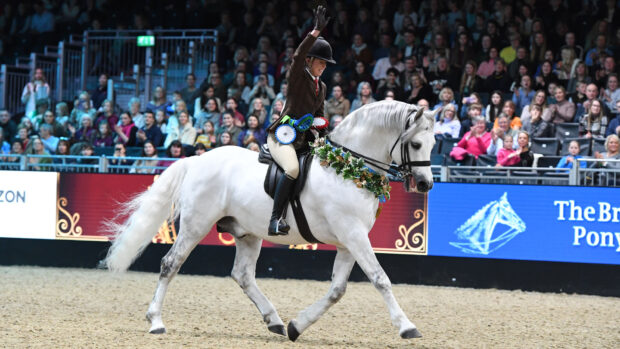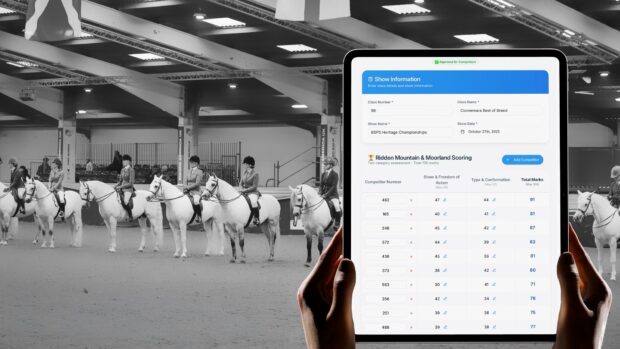Intermediate classes were introduced by the British Show Pony Society (BSPS) as a stepping stone into adult classes...
With riders up to the age of 25 being able to compete, the three intermediate flat classes plus the intermediate working hunter class are arguably some of the most competitive in showing. If you’re planning to show in intermediate classes this season, you need to know how to stand out to make the top of the line-up. The following tips will ensure you make an instant impact and catch the judges’ eye.
What are intermediate classes?
Intermediate classes were introduced by the British Show Pony Society (BSPS) as a stepping stone into adult classes. The classes allow riders to compete under BSPS rules up to the age of 25, prior to entering the more demanding hack, riding horse and hunter classes.
There are four intermediate classes:
1. Small intermediate show riding type (SRT)
2. Large intermediate show riding type (SRT)
3. Intermediate show hunter type (SHT)
4. Intermediate working hunter pony (INT WHP)
Unlike adult classes, the judge does not ride intermediate horses and riders are required to perform an individual show.
The BSPS is the governing society for qualifiers for the BSPS championships, Royal International Horse Show (RIHS) and Horse of the Year Show (HOYS).
Which intermediate class should I enter?
- A small intermediate SRT should exceed 146cm but not exceed 153cm.
Producer Sam Quiney explains that a small SRT should be a similar type of animal to a small hack when shown under British Show Horse Association (BSHA) rules.
“These classes are to encourage young riders to move on to horses and compete in adult classes as well as intermediate classes, which is why the classes were introduced,” says Sam, who is also a BSPS judge.
“A true SRT should certainly not be a 148cm show pony – it should be bigger and have more scope,” adds BSPS judge Patrick Lobb.
- A large SRT should exceed 153cm but exceed 158cm.
Sam says the large SRT is more of a mixture of types between a large hack and a small riding horse.
- The intermediate SHT should exceed 148cm but not exceed 158cm and is usually a horse that could also be shown in small hunter classes.
“A SHT needs to have more bone than a SRT and should be more free moving. It should be along the lines of a miniature middleweight hunter,” says Patrick.
Tack and turnout
- Tack should be neat with a straight cut saddle to show off the pony’s front.
- The bridle on a SRT is similar to a show pony and should be shown with a coloured browband.
- Competitors must wear navy blue jackets.
“These mustn’t be too short though and should be accompanied with a coloured tie,” adds Patrick. “Personally I don’t like glitter and definitely no sparkle. If the tack, horse and rider are presented properly it makes a tremendous effect on the overall picture.”
- Tack for a SHT should be more workmanlike with a plain browband, like a show hunter would wear. Patrick also notes that riders are expected to wear tweed jackets.
- Top boots should be worn in all intermediate classes and are preferable to gaiters or half chaps, and riders with long hair should have it in a bun.
Correct way of going
“Riders in the small SRT classes should perform a show that is more technical than what they would have done in pony classes,” explains Sam. “A serpentine, walk to canter, rein-back or even centre line changes are encouraged, but my advice would be to find what you can do well and perform it.
“A bad rein-back can ruin what was maybe a beautiful show. I encourage our jockeys to go for it and make their show interesting. There is nothing worse than watching a whole class of intermediates come out and perform a serpentine, with a walk to canter and an extension.”
Top tip: try to be different
“I think jockeys should throw something different in,” states Sam.
“One of my jockeys starts her show with a nice trot, canter and a gallop right from the start. Then she performs her serpentine, walk to canter, rein-back and, if she feels she really has to do something special to win, she’ll put centre line changes in at the end.
“Like hack classes you need to find what you and your horse are good at and make it your calling card.”
Sam explains that due to the large show riding types being a mix of hacks and riding horses, it is essential to gallop.
“Hacks don’t generally gallop in adult classes, but a riding horse does, so even if you’re riding a hack type you don’t want to get beaten by a riding horse type just because you didn’t show a gallop.”
The intermediate show hunter type is a small hunter.
“This type should have all the same qualities of the adult version, but sometimes a slightly stronger riding horse can make its way into this class,” adds Sam. “The individual show doesn’t need to be as technical as the SRT classes, but they should do a forward simple show that highlights a good trot, a canter on each rein and have a very good gallop.
“You can’t get away with an extension in this class and I’m not a fan of these horses performing serpentines, which seem to be making an appearance more and more.”
Remember to walk
“Every judge likes to see a good walk. There should always be a decent amount of strides at the beginning and end of the show. Eight to ten steps is just about enough as this shows a relaxed horse,” says Sam.
Show off in trot
“I like to see a good trot as this shows off a horse’s movement. Your show should be forward and, although hacks have a very collected way of going, I’ve seen too many jockeys try to perform this and not do it well,” adds Sam.
“Although the horse can be going in a collected way, some end up looking like they’re cantering or trotting on the spot. Horses must cover the ground, whether it be in complete collection or not.”
Riders should…
- Always present their pony in front of the judge at its best, ensuring there is clear space for the judge to see you without riding over them.
- Learn to stand their ponies correctly for conformation. They should stand to one side when the judge comes around to the front of the pony to allow the judge to look at its front legs clearly.
- Pay attention to the judge and steward at all times.
- Assess the size of the ring and adjust their show if necessary. If the ring isn’t big enough to keep your show flowing and forward while doing a serpentine, then ride a figure of eight with a walk to canter instead.
Continued below…
Like this? You might also enjoy reading these:
H&H’s guide to show hunter classes: weight categories, presentation and what makes the judges cringe
H&H’s guide to show cob classes: from weight divisions to showing off correctly
Subscribe to Horse & Hound magazine today – and enjoy unlimited website access all year round
Riders shouldn’t
- Over-trot their ponies.
- Get covered up by other riders on the go around.
- Present animals that are over bent and struggling for their heads.
- Keep looking back at their groom.
Showmanship comes into the intermediate classes more so than in the pony classes. Much can be learnt from the professionals on showmanship – watching the supreme championship at the BSHA championship show is a great way for intermediate jockeys to learn. Also the BSHA has put classes on for under 25s at their championships show. Young riders should should take advantage of them to help with the transition into horse classes.
Where to compete
All major shows have classes for intermediates, culminating in the intermediate championship. The intermediate working hunter is usually judged against the other working hunter pony winners in the championship.
At smaller shows, the intermediate types (flat) may be put together in one single class.
The biggest accolades an intermediate can win are the Royal International (RIHS) intermediate championship, or the intermediate of the year final held at Horse of the Year Show (HOYS) in October.
In 2019, the RIHS title went to Leaventhorpe Gold Rush (Meg Edmondson), while Holmestones Tailor Made (Charlotte Elliott-Grooby) was crowned intermediate show riding type of the year at HOYS and Carnsdale Wise Guy (Sam Walker) took the intermediate show hunter equivalent.
Horse & Hound magazine, out every Thursday, is packed with all the latest news and reports, as well as interviews, specials, nostalgia, vet and training advice. Find out more about getting the magazine delivered to your door every week.




